How the First Village (Lockport Village) Became the Second
The One Family Illinois Lockport Village was slated to be the very first Village of its kind in the United States. This alternative model of foster care had been established in Austria after World War II by a young medical student named Hermann Gmeiner. The Village Model of Care was based on four core principles of Gmeiner’s vision: “Having a caring mother, siblings, a home and a supportive community give a child a place to belong, where one feels safe and wanted. It is this very foundation that enables children to become successful adults.”

This concept was first introduced in North America by Dr. Hans A. Schieser, PhD, Professor emeritus, DePaul University Chicago, while attending the 1980 Congress of the World Organisation for Preschool Education (OMEP), which met in Quebec (Canada), to discuss the question “Is the young child a full-fledged citizen?” Dr. Schieser was invited to deliver a paper on “Socialization of Young Children: Successful Principles and Models.”
While he was preparing his paper, he used materials and data shared about Villages and their Founder, Hermann Gmeiner. Additionally, Dr. Schieser found out about the presence of a national Villages office in America: the office in New York at the time. Dr. Schieser’s presentation was well received and resulted in lively discussions, especially about the Village Model of Care, where many asked why there were no such Children’s Villages in America.
Dr. Schieser followed up on this question, after returning home by reaching out and staying in touch with the New York office. A full five years later, in November 1985, Hermann Gmeiner was scheduled to be in Madison, Wisconsin to meet with State of Wisconsin Officials discussing possibilities of establishing a Village there. Gmeiner was accompanied by Helmut Kutin, who would later become his successor. Dr. Schieser took this opportunity to invite them to stop over in Chicago for a lecture at DePaul University before they were flying on to Washington, DC.
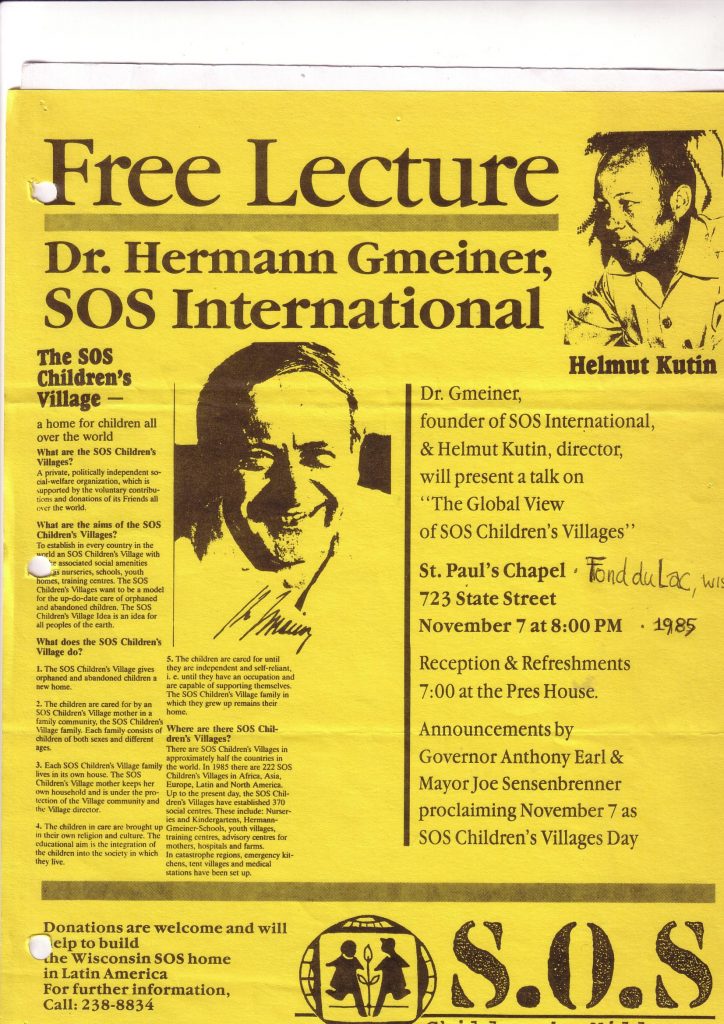
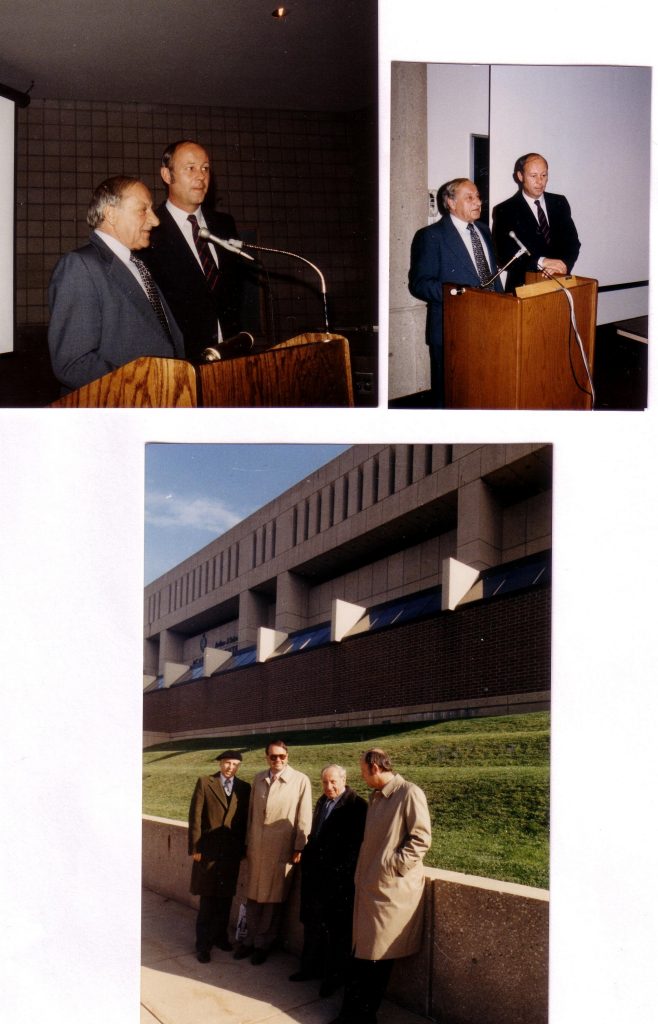
At DePaul University, a Seminar on “Alternative Successful Models of Childhood Education” had been scheduled for November 9, 1985 – a series of Saturday Seminars run by the DePaul University School of Education, the Chicago Waldorf School, and the Midwest Montessori Teacher Training Center. Hermann Gmeiner gave two lectures, which were translated by Helmut Kutin, that were attended by many students and interested professionals from Chicago.
It was during this trip that Dr. Schieser, Hermann Gmeiner, Helmut Kutin and a few others were able to meet to discuss the possibility of establishing a Children’s Village somewhere in the Chicago area. Hermann Gmeiner encouraged Dr. Schieser to find a group of interested people who could serve on a Board. Colleagues at the School of Education, especially Professor Andrew Kopan, were ready to start with a Board. There were also Austrians who had been at the meeting, and others who had attended the lectures at DePaul University. Another individual Dr. Schieser approached was German architect, Mr. Dirk Lohan. Lohan agreed immediately, which led to the establishment of the Board and the Illinois Villages were soon thereafter incorporated.
The search for land began. After several failed attempts, the Board found an abandoned farm on 50 acres, near Lockport (about 25 miles southwest of downtown Chicago). The Villages International headquarters in Innsbruck looked at the property and agreed to buy the farm. For the signing of the contract and the other legal procedures, Helmut Kutin and Dr. Gschliesser came from Austria and German, a representative from the office in New York, and a supporter from Vermont. And the sign when up, “the first Village in the USA.”

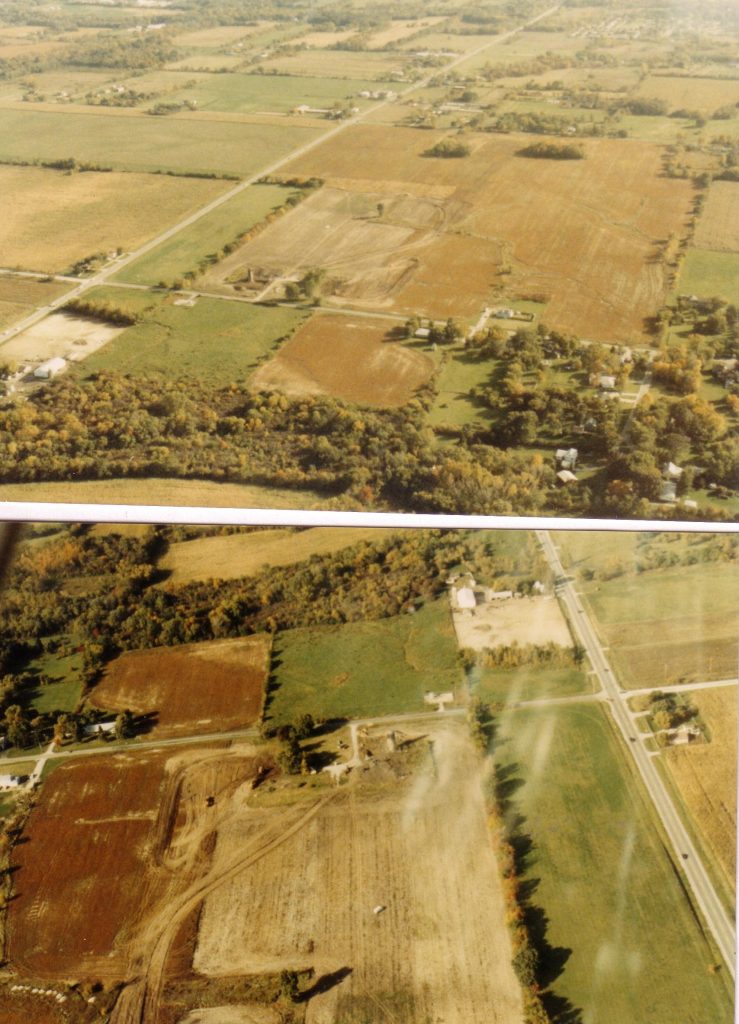
After successful neighborhood meetings, the project was accepted by fellow Lockport residents. Additionally, Lohan’s associates drew up a professional plan that become the final layout. Included in this plan was the decision to keep the original farm silo as a landmark. Dirk Lohan then appointed an architect, a young colleague named Christopher Rudolph, to draw up the final blue prints.
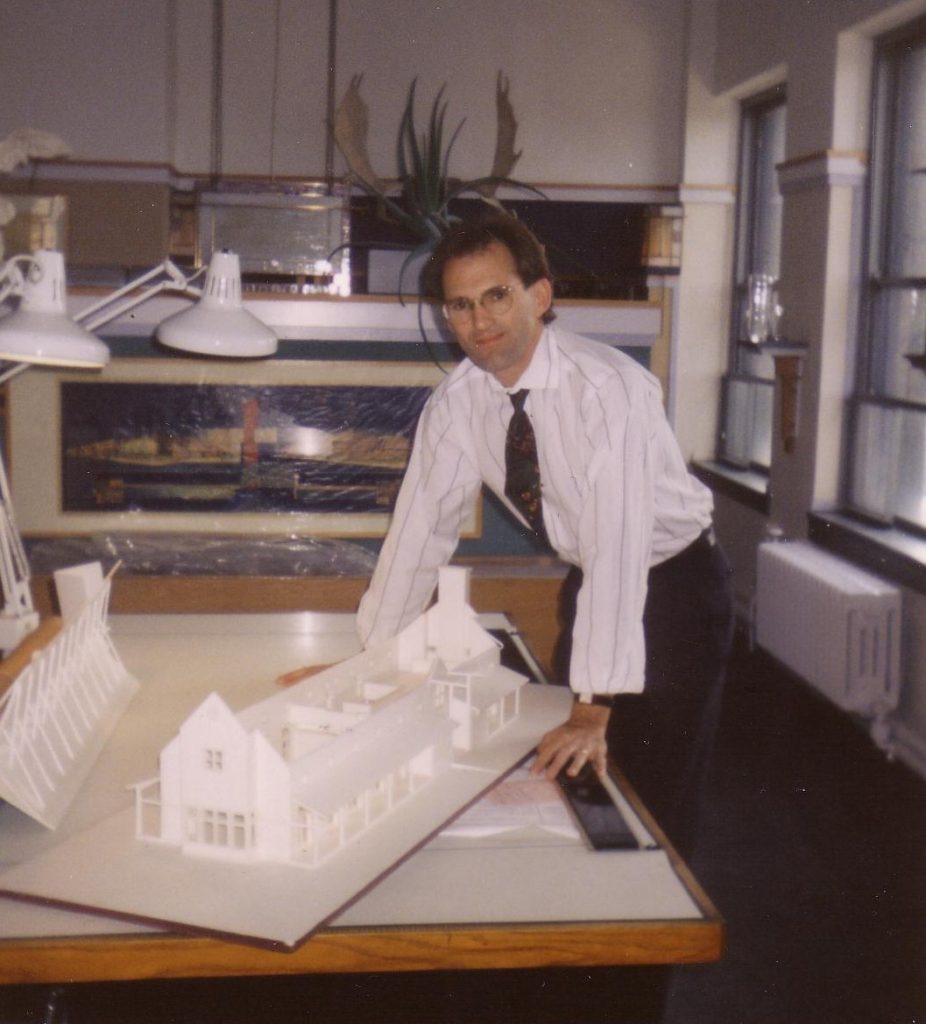
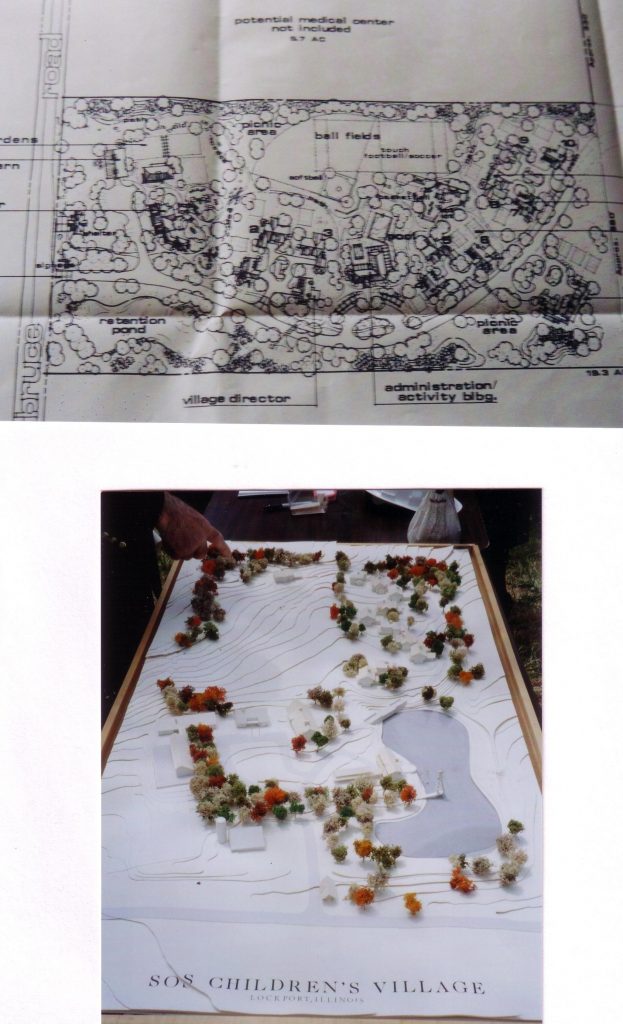
There were long discussions over the size of the garage and basement in each house. Discussions included needing room for a large car as well as space for the bikes and sports equipment of the children, as well as having a basement, which was mandatory as a shelter in the event of the tornados, common threats in the Midwest, which are not as common in Europe.
As progress to open the first Village in the United State continued, sad news arrived on April 26,1986. Founding One Family Illinois Board Members learned that Hermann Gmeiner had passed away.
The report in the American news shared that the “Father of Thousands of Children” was called “home,” and this then became the stimulus to start a Village in Florida. A group around the Judge Estella Moriarty began with the project in Coconut Creek (near Ft. Lauderdale). Meanwhile, support for the Lockport Village was growing with more Board Members and an Advisory Board. Additionally, local support including the Mayor of Lockport was key to the project persevering and its ultimate success.
The official Ground Breaking Ceremony of the Lockport Village took place on June 6, 1992. However, the Villages Florida become the first in the United States when it opened in 1993, while One Family Illinois in Lockport was later that year. So, the “first” Village actually become the second…
After retiring from DePaul University in 1991, and moving back home to Germany, Dr. Schieser handed over the baton to Dirk Lohan, knowing that the Village would be in good hands during the first phase of growth.
Some years later around 2009, Dr. Schieser found news about the “very first” Village in America, which was a great surprise, since no one had mentioned this when the Illinois project began. In July 1962, a corporation “Children’s Communities, Inc.” had started the Morrisville Village in Vermont. Although Hermann Gmeiner had visited the place (estimated 1965), “Children’s Communities” never was officially affiliated with Villages International. It seems that the Village could no longer afford the operations, after Vermont Welfare laws had changed. The houses were closed and sold to another organization that subsequently folded too, in 1990.
After all this, it truly does not matter who was first. Relfecting now, we are grateful to Dr. Hans Schieser for following his dream of bringing Hermann Gmeiner’s vision to life here in Illinois. Dr. Schieser, and the dedicated founding Board Members worked tirelessly to bring about the Village Model of Care that has innovated what it means to be a child in foster care in Illinois. These early Villages in the United States laid the foundation for the continued growth of the Village Model of Care that has transformed the lives of thousands of children throughout our history.
One Family Illinois After 30 Years
One Family Illinois, founded over 30 years ago, is an individual 501(c)3 child welfare agency that serves over 500 at-risk youth and children and families of Illinois each year by providing a stable home in a supportive, community environment designed to help children in need grow into caring, productive, and self-reliant adults.
Following Hermann Gmeiner’s vision, One Family Illinois emphasizes uniting siblings in foster care who then receive care and support from a full-time, professionally trained Foster Parent, grow up in one of our private, single-family homes, and are supported by the Village, designed as an intentional community of care. At One Family Illinois, we also include our family strengthening services as a cornerstone to the important work we do with regards to reunifying families.
One Family Illinois is proud to be a part of an organization that stands for the rights and dignity of each child. We, as an organization, will continue to ensure that as long as a child is in need of safety, security, and community, One Family Illinois will encourage them on their journey toward healing and reaching their fullest potential. We will work to make a difference because we see each child as our responsibility, as did Hermann Gmeiner: “All the children of the world are our children.”
Support the One Family Illinois Legacy
Consider making a contribution to ensuring the programs and services at One Family Illinois continue to strengthen families and transform lives for years to come as well. Click here to donate today. Remember, one small action can start a worldwide movement.